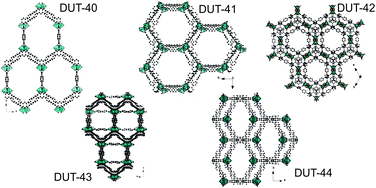A family of 2D and 3D coordination polymers involving a trigonal tritopic linker†
Abstract
Five new coordination

- This article is part of the themed collection: Coordination chemistry in the solid state
* Corresponding authors
a
Department of Inorganic Chemistry, Dresden University of Technology, Bergstr. 66, 01062 Dresden, Germany
E-mail:
Stefan.Kaskel@chemie.tu-dresden.de
Fax: +49 351 46337287
b
Department of Physical Chemistry and Electrochemistry, Dresden University of Technology, Bergstr. 66b, 01062 Dresden, Germany
E-mail:
Igor.Baburin@chemie.tu-dresden.de
Fax: +49 351 46335953
Tel: +49 351 463 32637
c
Helmholtz-Zentrum Berlin für Materialien und Energie BESSY-MX Group, Albert-Einstein-Str. 15, 12489 Berlin, Germany
E-mail:
umue@helmholtz-berlin.de
Fax: +49 030 806214975
Tel: +49 030 806214974
Five new coordination

 Please wait while we load your content...
Something went wrong. Try again?
Please wait while we load your content...
Something went wrong. Try again?
I. M. Hauptvogel, V. Bon, R. Grünker, I. A. Baburin, I. Senkovska, U. Mueller and S. Kaskel, Dalton Trans., 2012, 41, 4172 DOI: 10.1039/C2DT12072K
To request permission to reproduce material from this article, please go to the Copyright Clearance Center request page.
If you are an author contributing to an RSC publication, you do not need to request permission provided correct acknowledgement is given.
If you are the author of this article, you do not need to request permission to reproduce figures and diagrams provided correct acknowledgement is given. If you want to reproduce the whole article in a third-party publication (excluding your thesis/dissertation for which permission is not required) please go to the Copyright Clearance Center request page.
Read more about how to correctly acknowledge RSC content.
 Fetching data from CrossRef.
Fetching data from CrossRef.
This may take some time to load.
Loading related content
